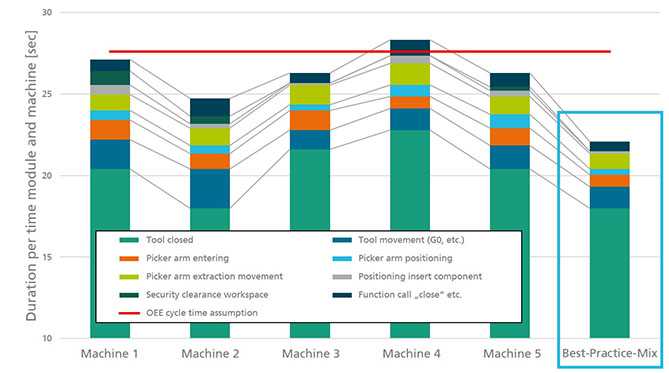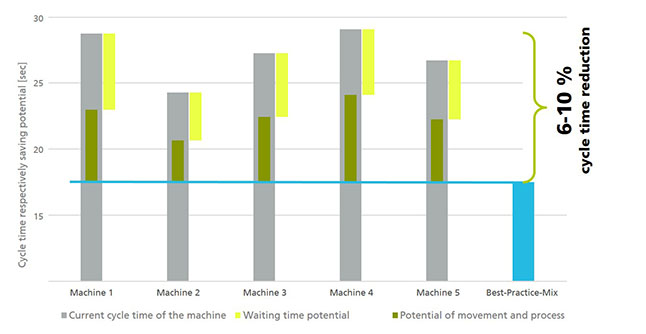In Short
In the pilot project »Integrative Machine Benchmark« Fraunhofer IPA has developed an approach for Freudenberg Sealing Technologies that can be used to further optimise several already standardised machines. The scientists used data-driven evaluation models that assess external sensor signals and machine data to determine how long different machines need for individual sub-steps of a machining process. On 5 machines, optimisation potential between 6 and 10 per cent has been revealed by reducing the technical auxilliary process time


